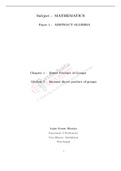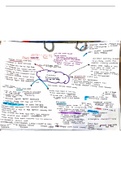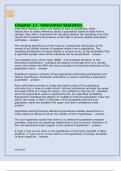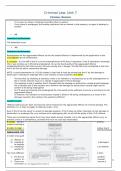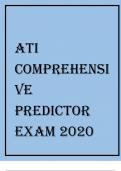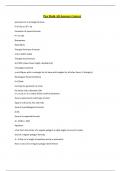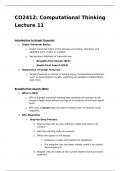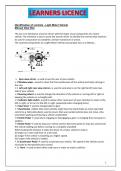Subject : MATHEMATICS
Paper 1 : ABSTRACT ALGEBRA
Chapter 1 : Direct Product of Groups
Module 2 : Internal direct product of groups
Anjan Kumar Bhuniya
Department of Mathematics
Visva-Bharati; Santiniketan
West Bengal
1
, Internal direct product of groups
Learning outcomes: 1. Internal direct product of groups.
2. Necessary and sufficient condition for a group to be an
internal direct product.
3. Isomorphism between external and internal direct products.
In the previous module we introduced and characterized external direct products of groups,
that provides us a formulation to think a family of distinct groups as subgroups of a larger group.
To be specific, consider two groups G1 and G2 having the identity elements e1 and e2 respectively.
Then N1 = G1 × {e2 } ' G1 and N2 = {e1 } × G2 ' G2 are two normal subgroups of G1 × G2 . In
this module we consider the reverse problem, that is, given a group G whether there is a family of
subgroups H1 , H2 , · · · , Hk of G such that G ' H1 × H2 × · · · × Hk .
As we can expect, it is not possible for every group in general. Even if it is possible for a group
G, then also the subgroups of which external direct product is isomorphic to G need to satisfy some
conditions. Following result gives us an idea on the conditions that the subgroups need to satisfy.
Henceforth we use simply multiplicative notation instead of ∗ to mean the group operation of the
direct product.
Theorem 0.1. Let G1 , G2 , · · · , Gn be a family of groups. Denote G = G1 × G2 × · · · × Gn and
Hi = {(e1 , · · · , ei−1 , ai , ei+1 , · · · , en ) | ai ∈ Gi }
for every i = 1, 2, · · · , n. Then
1. Hi is a normal subgroup of G and Hi ' Gi for every i = 1, 2, · · · , n;
2. every element of G can be expressed uniquely as h1 h2 · · · hn where hi ∈ Hi for every i =
1, 2, · · · , n.
Proof. 1. First note that (e1 , e2 , · · · , en ) ∈ Hi which ensures that Hi 6= ∅.
2
Paper 1 : ABSTRACT ALGEBRA
Chapter 1 : Direct Product of Groups
Module 2 : Internal direct product of groups
Anjan Kumar Bhuniya
Department of Mathematics
Visva-Bharati; Santiniketan
West Bengal
1
, Internal direct product of groups
Learning outcomes: 1. Internal direct product of groups.
2. Necessary and sufficient condition for a group to be an
internal direct product.
3. Isomorphism between external and internal direct products.
In the previous module we introduced and characterized external direct products of groups,
that provides us a formulation to think a family of distinct groups as subgroups of a larger group.
To be specific, consider two groups G1 and G2 having the identity elements e1 and e2 respectively.
Then N1 = G1 × {e2 } ' G1 and N2 = {e1 } × G2 ' G2 are two normal subgroups of G1 × G2 . In
this module we consider the reverse problem, that is, given a group G whether there is a family of
subgroups H1 , H2 , · · · , Hk of G such that G ' H1 × H2 × · · · × Hk .
As we can expect, it is not possible for every group in general. Even if it is possible for a group
G, then also the subgroups of which external direct product is isomorphic to G need to satisfy some
conditions. Following result gives us an idea on the conditions that the subgroups need to satisfy.
Henceforth we use simply multiplicative notation instead of ∗ to mean the group operation of the
direct product.
Theorem 0.1. Let G1 , G2 , · · · , Gn be a family of groups. Denote G = G1 × G2 × · · · × Gn and
Hi = {(e1 , · · · , ei−1 , ai , ei+1 , · · · , en ) | ai ∈ Gi }
for every i = 1, 2, · · · , n. Then
1. Hi is a normal subgroup of G and Hi ' Gi for every i = 1, 2, · · · , n;
2. every element of G can be expressed uniquely as h1 h2 · · · hn where hi ∈ Hi for every i =
1, 2, · · · , n.
Proof. 1. First note that (e1 , e2 , · · · , en ) ∈ Hi which ensures that Hi 6= ∅.
2

